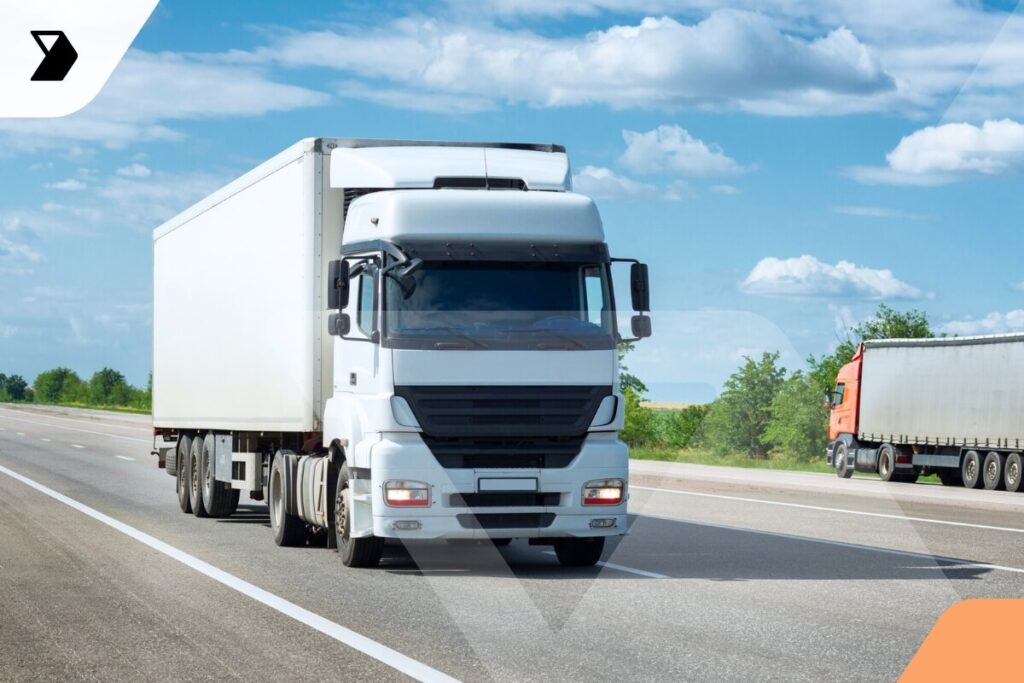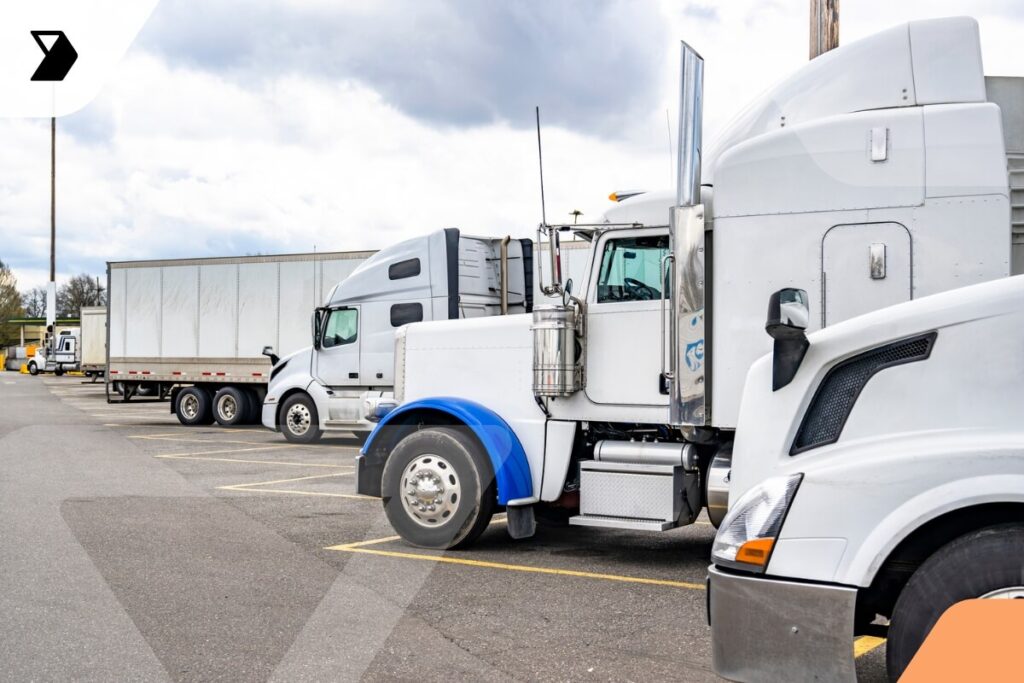What Is a Trip Envelope? A Definition and Where to Find One
Trip envelopes are a vital piece of operational paperwork in any freight or logistics company.
Ready to transform your supply chain?

If you’re sitting there staring at those two words thinking, “I know what a trip is, and I know what an envelope is, but I have no idea what a trip envelope is,” then this post is for you.

I’ll go through what a trip envelope is, what people use them for, and why they matter. Then we’ll discuss how to manage them, including some hints, and we’ll consider digital options.
If you already use trip envelopes and you want to digitize your record keeping, Vector has you covered. If you don’t, read on!
The Point of Trip Envelopes
Think of trip envelopes as the set of driver paperwork that goes back to the logistics company about the drive. They’re designed to make sure all the information about a trip is accurate, clear, and complete. That might sound a bit circular, but we’ll discuss it in more detail in a moment.
Trip envelopes differ from company to company, but typically they contain the following fields:
- Vehicle identification, such as VIN or license plate number
- The driver details (name, employee number, phone number, and so on)
- Details about the route, including highways and tolls, as well as odometer readings, date, and time at key points
- Details about fuel purchases, including the amount of fuel, cost, and vendor information (with associated receipts attached)
- Maintenance or damage reports from the trip (and associated receipts or documentation)
- Other miscellaneous costs the driver incurred (with receipts). This depends on the company, but it can include things like food or equipment such as flashlights.
Some versions of trip envelopes also allow drivers to write more details about the trip in a free-text section.
At the end of the trip, drivers collate the form or forms for a longer trip, with all associated documentation (receipts, images, maintenance details, and so on) and submit it to the company.
The Trip Envelope: Its Uses and Why They Matter
Trip envelopes serve different purposes depending on your role in the company. As I said before, they’re a vital piece of operational paperwork. The list below gives the main purposes for various roles and departments across an organization. While it’s not exhaustive, it should give you a good idea of the value of trip envelopes.
- For drivers, trip envelopes ensure that they’re paid correctly for the work they complete. This includes being reimbursed for expected and unexpected expenses.
- For people in the accounts and finance departments, trip envelopes serve a similar purpose. They ensure that drivers are paid for the work they complete. On the flip side, they ensure that customers are billed correctly.
- For admins, HR staffers, and union representatives, they’re a way of ensuring drivers are doing the right thing. They’re also a way of protecting drivers from incorrect and unfair punishment or dismissal.
- For people in the logistics and maintenance departments, trip envelopes provide information about the state of vehicles in the fleet. This can mean optimizing routing, maintenance, and repair schedules or predicting problems.
- For people in the legal department, these envelopes help to ensure the company is following correct processes and procedures. This is especially important when crossing state, territory, or country borders.
Outside of your company, trip envelopes are also important.
- They matter to customers. Having accurate information means you’ll be able to charge customers correctly for delivery.
- Further, these envelopes may be of use to government or private road authorities (on request), who can examine them to understand how people are using their roads.
- Similarly, trip envelopes are useful to auditors, who use them to check that the company is following correct procedures.
Where Can I Get Trip Envelopes?
You can get trip envelopes from a number of places. A quick search will return plenty of places you can order them. For example, Trucker Forms, Designs N Print, Brothers Printing, Trucking Logs, and J. J. Keller were the first five results for me. Similarly, logistics-related legal offices and government departments may have samples.
As I said earlier, though, trip envelopes vary from one company to the next. So before ordering the first one you see, think about how you’re going to use it. Do you have any extra details that you’ll need drivers to record? Are there any restrictions in your country, state, or territory? Are there any ways you can make the process faster and easier for drivers? Is it better to make a digital version?
I suggest talking with all the stakeholders mentioned above, as well as the IT or technology department, before making the jump.
After you have the right trip envelopes for your situation, how do you manage them?
How to Manage Trip Envelopes
As you might imagine, trip envelopes are paperwork that builds up rapidly. Whether you’re the driver or in accounts, finance, admin, HR, logistics, maintenance, or legal, it’s important that you stay on top of the flow.
There are different ways to keep track of the information, but as is the case with all paperwork, organization matters. Whatever system you go for, whether it’s storing by driver, vehicle, date, trip, customer, or something else, ensure you’re consistent.
To help along the way, here are some hints for managing trip envelopes.
- Be timely. A late trip envelope at any stage in the process can be just as bad as one that’s never submitted.
- Double-check to ensure accuracy. Similar to timeliness, an incorrect trip envelope can be just as bad as one that’s not submitted. This is true for the original forms and when you’re entering their information into other systems (if applicable).
- Label every piece of paper, and use staples. Paperwork comes apart and is easily lost. It takes only a few extra seconds to label the corners.
- Record backups of information. For drivers, this could be in a personal logbook, and for those in the head office, it could be scans of the documents.
- Record when the trip envelopes move from person to person and who received them (with a signature if possible). This happens when you deliver to customers, so why not when moving through the office?
What Are My Digital Options?
In addition to the above hints, the number-one thing you can do to use a digital process when and where possible. Among other benefits, digital processes allow you to speed up the flow of information, minimize or prevent prevent human error, and reorganize information based on context. Further, they open up the gate to analysis and automation. Digital scanning can even work with torn or crumpled documents.
There are two main avenues for digital options:
Option 1: Submit as You Go
The first is to allow drivers to submit photos of their documentation (trip envelopes, receipts, and other details) as they go. This is generally in addition to submission of the actual forms and documents at the end of the trip.
The main benefit of this approach is that it allows for processing to begin earlier, with head office staff processing documentation while drivers are still on the road. Similarly, the approach ensures that details aren’t lost and are less susceptible to human error. People often choose this option because they can do it by email and with apps like Expensify. In some cases, companies use custom-built apps.
However, there’s a drawback to this method. While submitting as you go looks like a neat solution, it still involves a large amount of manual processing and overhead.
Option 2: Go 100% Digital
The other option is to make and use a fully digital form in an app or website. Doing so has all the benefits of the first option, without the manual processing or overhead drawbacks. Drivers are able to enter the details directly into their phones. These details are instantly available in linked transportation management systems. And they’re available to stakeholders at the head office. There’s no manual handling involved. In addition, it’s possible to make form fields that capture photos of receipts and documentation. The best way to achieve something like this is to work with a specialized provider.
Conclusion
You should now have a good idea of what trip envelopes are and why they’re so vital. Trip envelopes record trip information accurately, clearly, and completely. They affect stakeholders across the business and outside of it. Whether you’re new to trip envelopes or have a stack of them sitting in the cab or a filing cabinet, digitizing the process will allow you to streamline your tasks and improve your accuracy.
This post was written by Michael de Ridder. Michael has worked in software development, data visualization, data science, research, consulting, and business analysis across healthcare, telecommunications, radio and finance. He enjoys the challenge of combining and utilizing the relationships between different domains and technology. A big fan of travel, Michael is a proponent for the benefits of work-life balance, believing that time away from a subject allows creativity to flourish.
Continue reading
Ready to transform your supply chain?
Increase efficiency and productivity. Say goodbye to delays, handwriting errors, and time-intensive manual data entry.



